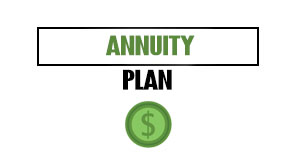It takes bold vision, long nights, and hustle to be an entrepreneur. Yet too many founders overlook the one thing that will determine their long-term peace of mind: a retirement-ready budget.
Yes, you should forecast. It’s not just about your business, but also about you.
Unlike traditional employees, entrepreneurs don’t have access to employer-sponsored 401(k)s or predictable W-2 income. As such, retiring isn’t something that happens automatically — it has to be planned intentionally. To do this, you need to understand your income, track your expenses, and establish systems to turn short-term cash flow into long-term stability.
So, let’s discuss how to build a retirement-ready budget. And, most importantly, why forecasting isn’t just a CFO task, but a founder’s responsibility.
Table of Contents
ToggleUnderstand the Financial Blind Spot Most Founders Have
When it comes to money, entrepreneurs often take a “whatever comes in, I’ll make it work” approach. When you’re just starting out, that’s all fine and well. Eventually, this reactive mindset creates stress, prevents strategic decision-making, and delays wealth accumulation.
With that in mind, it’s too common for founders not to know:
- The amount of money they need to retire.
- What they’re currently spending — both personally and professionally.
- How long will their runway be beyond 3–6 months?
- Their long-term financial goals and how their business income relates to them.
This is where forecasting becomes a necessity. Rather than predicting the future perfectly, forecasting involves being prepared for it.
Start With a Simple Retirement Number
The first step does not require a degree in finance. Instead, as a rule of thumb, you can use the following;
Take your desired annual retirement income and multiply it by 25.
For example, if you want $100,000 per year in retirement;
$100,000 × 25 = $2.5 million.
In this case, we’re using the widely accepted 4% withdrawal rule. Even though it’s not perfect, it’s a good starting point. If your risk tolerance is low, adjust up. If your goals are high, adjust down.
It is then possible to work backwards to answer the following;
- What is the amount you have already saved?
- What’s the annual gap that you need to close?
- To get there, how many years will it take?
Taking this approach, you can estimate how your personal finances should look — instead of just focusing on how to make money for your business.
Forecast Your Business and Personal Cash Flow
When you have a long-term target in mind, you need to identify all the necessary inputs to achieve it.
To forecast revenue, expenses, and profit trends, use tools like QuickBooks, Coupa, or Xero. With these tools, you can;
- View profit and loss statements in real-time.
- Prepare for seasonal fluctuations by forecasting income.
- Determine which areas are being overspent on or underutilized.
Remember to take your personal cash flow forecast into account as well. Some popular choices include Kualto, which offers detailed cash flow forecasts, and CashFlow+, which provides a variety of financial planning features. There are also budgeting and tracking tools with forecasting capabilities available from PocketSmith, YNAB, and Simplifi.
Next, break down your forecast into;
- Fixed costs, such as rent/mortgage, insurance, and utilities.
- Variable expenses like travel, food, and entertainment.
- Savings and investments, including retirement accounts, brokerage, and real estate.
It’s now possible for you to see what’s flowing into your life as well as what’s flowing out.
Budget Backwards From Your Goals
The traditional approach to budgeting asks, “What am I able to afford?” When it comes to retirement-ready budgeting, however, it asks, “What will I need to save to reach my goals? ”
Rather than treating savings as a non-negotiable line item, budget backwards;
- To reach your retirement goal, determine how much you need to save each month or quarter.
- After you have accounted for that number, you can build the rest of your budget.
Say you want to save $40,000 per year for retirement;
- That’s about $3,333 per month.
- This number should be treated as if it were rent or payroll.
As a result, you’ll build wealth faster and reduce the emotional burden of playing “catch-up” in your 50s or 60s.
Automate Everything You Can
An entrepreneur’s life is constantly filled with firefighting. In general, though, the less work you have to do manually with money, the better.
Fortunately, there are several tools that can help you automate retirement withdrawals, so you don’t need to remember to do it each time.
- Using QuickBooks, you can track profit and report on it automatically.
- Expenseify simplifies expense categorization and reimbursement, keeping your finances in order.
- For companies in growth stages, Coupa offers robust procurement and expense management capabilities.
Also, make sure to set up the following;
- Automatic transfers between your business and personal investment accounts.
- Recurring contributions to SEP IRAs, Solo 401(k)s, or Roth IRAs.
- Check-ins with real-time dashboards — rather than logging into five different apps.
The key is to eliminate friction between intention and action.
Use Forecasting to Reduce Financial Anxiety
You’re not immune to financial anxiety just because you are a founder. The stakes are higher. Besides your own future, you may also have employees, customers, and family who depend on you.
Although forecasting and budgeting will not eliminate uncertainty, they will help to:
- Assist you in making decisions with confidence.
- Provide you with guidance on how to prepare for market downturns and changes.
- Make it easier for you to invest in both the future and your business strategically.
It’s like regaining mental bandwidth.
Review and Adjust Quarterly
Forecasts aren’t static– they’re living documents. As such, every quarter you should;
- Compare actuals with forecasts.
- Adapt your income expectations, savings rate, or expenses accordingly.
- Assess whether your retirement target is still realistic — or if it needs to be adjusted.
Reviewing quarterly is more manageable than micromanaging monthly. And, it’s more effective than panicking yearly.
Final Thought: Peace of Mind Comes From Preparation
You didn’t become an entrepreneur to worry about money forever. It was all about creating freedom: time, autonomy, purpose, and financial freedom.
However, freedom doesn’t come by accident. It all starts with forecasting.
So, become familiar with your numbers. From there, build a budget that reflects your goals, not just your obligations. Also, automate your savings and make use of the right tools.
There is no doubt that your business will create wealth, but only a budget will make that wealth secure.
Now is the perfect time to start preparing for the future, while you still have power, energy, and income to do so.
Image Credit: Leeloo The First; Pexels














